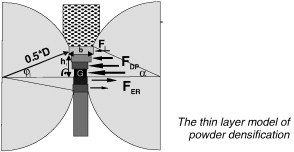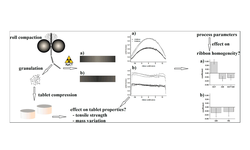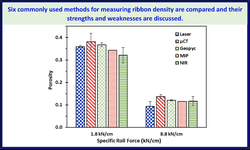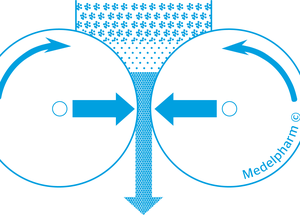Scientific papers
The thin-layer model operates on the premise that the powder deformation observed during tableting can be applied to the roller compaction process, provided accurate data is obtained from the tableting experiments. The compaction process between the rolls is assumed to comprise three phases: rearrangement, an "exponential" phase, and an elastic recovery phase. The first two phases are utilized to calculate material densification. The forces between the rolls during elastic recovery, the third phase, prove crucial for accurate predictions, as 20% to 30% of the total roller compaction force is needed to counteract ribbon recovery.
The model was tested with four different excipients and one powder blend. Predictions for density and force were accurate within ± 2.5% and ± 10%, respectively, for two materials. However, systematic deviations were observed for one excipient and the model blend, while predictions for the remaining excipient fell within the specified limits in approximately 50% of the experiments. To elucidate these differences, the study assessed the impact of the force–time profile course at comparable densification times and the influence of different compression times for comparable force–time profiles. Lastly, the estimation of density distributions within ribbons was examined for its effect on predictions.

Comments
No comments posted yet.
Add a comment















